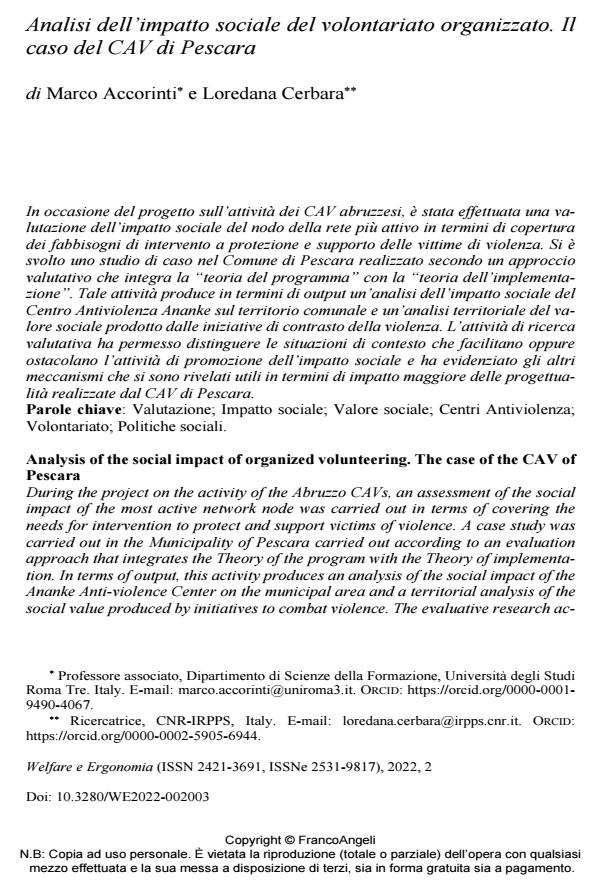Analysis of the social impact of organized volunteering. The case of the CAV of Pescara
Journal title WELFARE E ERGONOMIA
Author/s Marco Accorinti, Loredana Cerbara
Publishing Year 2023 Issue 2022/2
Language Italian Pages 16 P. 27-42 File size 227 KB
DOI 10.3280/WE2022-002003
DOI is like a bar code for intellectual property: to have more infomation
click here
Below, you can see the article first page
If you want to buy this article in PDF format, you can do it, following the instructions to buy download credits

FrancoAngeli is member of Publishers International Linking Association, Inc (PILA), a not-for-profit association which run the CrossRef service enabling links to and from online scholarly content.
During the project on the activity of the Abruzzo CAVs, an assessment of the so-cial impact of the most active network node was carried out in terms of covering the needs for intervention to protect and support victims of violence. A case study was carried out in the Municipality of Pescara carried out according to an eval-uation approach that integrates the Theory of the program with the Theory of im-plementation. In terms of output, this activity produces an analysis of the social impact of the Ananke Anti-violence Center on the municipal area and a territorial analysis of the social value produced by initiatives to combat violence. The eval-uative research activity has made it possible to distinguish the context situations that facilitate or hinder the promotion of social impact and highlighted the other mechanisms that have proved to be useful in terms of greater impact of the pro-jects carried out by the CAV of Pescara.
Keywords: Evaluation; Social impact; Social value; Anti-violence Centers; Volunteering; Social policies.
Marco Accorinti, Loredana Cerbara, Analisi dell’impatto sociale del volontariato organizzato. Il caso del CAV di Pescara in "WELFARE E ERGONOMIA" 2/2022, pp 27-42, DOI: 10.3280/WE2022-002003